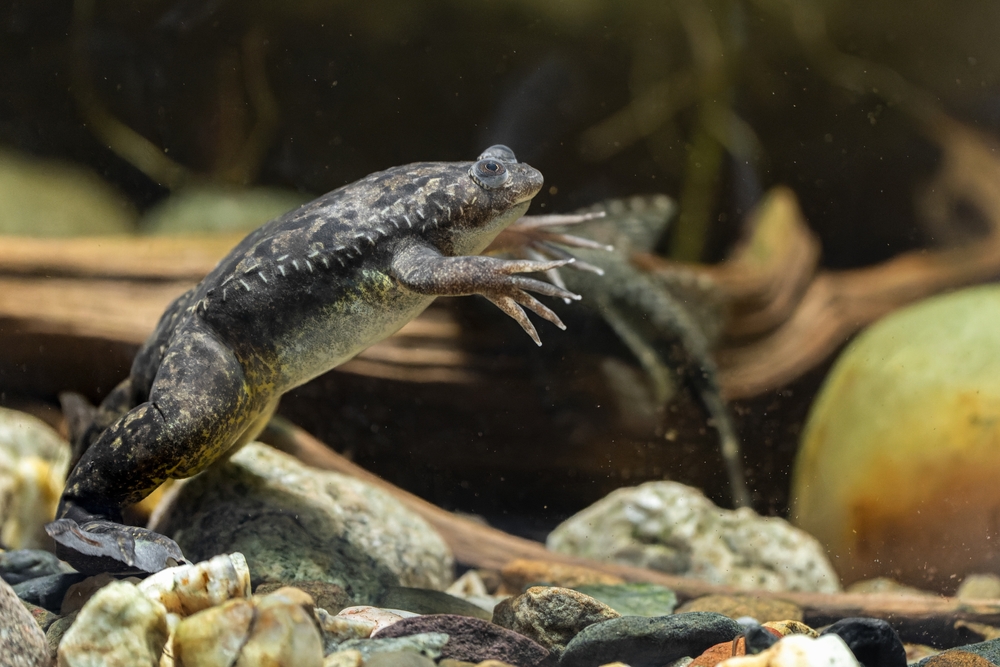The closest relatives to Xenopus laevis are other members of the genus Xenopus, which includes over 20 species of fully aquatic frogs native to sub-Saharan Africa. The most closely related species include:
-
Xenopus tropicalis – Also known as the Western Clawed Frog, this species is genetically and morphologically similar but smaller. It is frequently used in laboratory research alongside X. laevis.
-
Xenopus muelleri – Shares overlapping habitat ranges and similar aquatic traits.
-
Xenopus gilli and Xenopus victorianus – Smaller, more range-restricted cousins with similar physical and behavioral features.
All Xenopus species share the same key traits:
-
Fully aquatic life cycle
-
Flattened body and smooth skin
-
Lateral line system
-
No tongue or eyelids
-
Clawed hind feet for swimming and feeding



































































